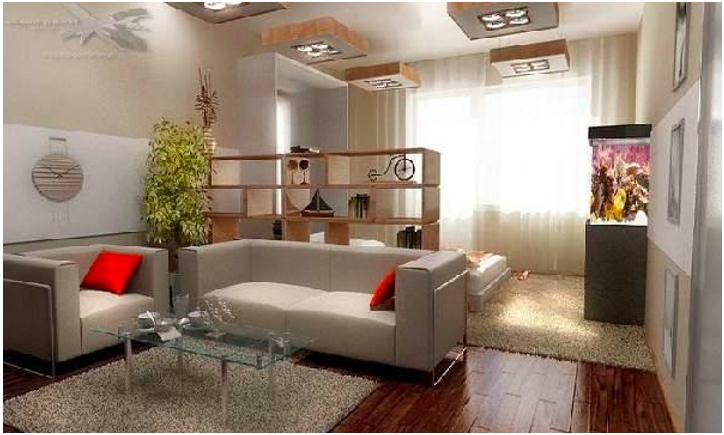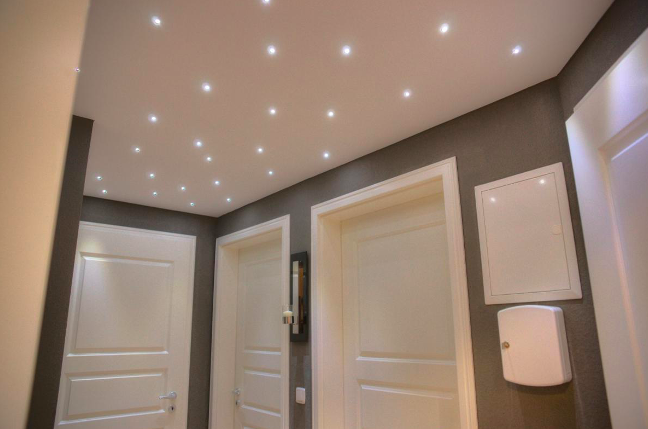Insulation of the roof of the bath is desirable to perform not tight materials such as mineral wool, polystyrene foam or polystyrene. These are good heat insulators, affordable and easy to install. But along with the pros, they also have their cons. How to choose the right product, and how to perform insulation in different ways, is described in the presented article.
The content of the article
-
The choice of insulation
- Mineral wool
- Expanded clay
- Styrofoam and expanded polystyrene
- Ecowool
-
Ceiling insulation instructions
- deck type ceiling
- Suspended ceiling
- panel type ceiling
The choice of insulation
First of all, it is important to understand how to insulate the roof of the bath. The choice of materials is quite large, and each has its pros and cons. Below are the most common heaters and their features.
Mineral wool
This is a group of materials with similar properties. The main types are:
- glass wool;
- slag;
- stone wool.
The advantages of using such heaters are obvious. They are well protected from the cold, resistant to temperature extremes and fire. On average, cotton wool lasts up to 40 years, since it does not decompose or rot. But when studying how to insulate the roof of a bathhouse, it should be noted that the material can be severely damaged even from drops of moisture. Therefore, during installation, it is important to consider good waterproofing.

Expanded clay
The roof of the bath with your own hands can be insulated with expanded clay of various fractions. It has its own advantages:
- good protection against heat;
- resistance to fire;
- does not absorb moisture;
- does not rot or decompose.
However, expanded clay is always covered in large quantities. Therefore, such a heater is suitable for the roof of the bath only strong, with capital structures. It is also important to arrange waterproofing. Expanded clay does not collapse from moisture, but dries for a very long time.
Styrofoam and expanded polystyrene
Another way to insulate the roof of the bath with your own hands is associated with laying polystyrene foam or polystyrene foam. They have similar properties, but the latter is denser. Among the advantages of such materials are the following:
- light weight;
- excellent thermal insulation;
- low water absorption;
- resistance to mold, fungi;
- affordable price.

The only significant disadvantage is the lack of resistance to elevated temperatures. This is an unsafe material in case of fire - it quickly ignites and starts to burn. Therefore, if we consider how to properly insulate the roof in the bath, it is necessary to take into account building codes. If the room is old, it is better not to take risks and use other heaters, for example, expanded clay.
Ecowool
Do-it-yourself warming of the bath roof can also be done using ecowool. It also protects well from the cold and provides several important advantages:
- resistant to temperature extremes;
- has a low weight;
- durable;
- resistant to pests and fungi.
But the installation process itself is quite complicated. If possible, it is easier to call a team of professionals, since special equipment will be required.
Ceiling insulation instructions
Having figured out the better to insulate the roof in the bath, you can proceed to consider how to carry out the work. The technology depends on the type of ceiling. The easiest way is to insulate the flooring, the most difficult is the hemming and especially the panel ceiling.
deck type ceiling
So, we make the roof of the bath with our own hands. The most affordable option is a floor-type ceiling, i.e. without installing beams. Floor boards are placed on the walls and thus form floors without installing intermediate supports. The design is suitable only for a bath of a small area. At the same time, the insulation should be light - otherwise the boards may not withstand.
During installation, they act like this:
- First fix the strips on the ceiling. If the material will lie high, it is necessary to equip the sides of the appropriate sizes around the entire perimeter.
- Mount the insulator. If we talk about what is the best insulation for the roof of the bath, in this case, foam plastic, polystyrene foam or different types of mineral wool, which are not distinguished by high density, are well suited.
- A vapor barrier layer is laid, for example, a foil sheet (with the metal part down). The strips should be overlapped by at least 10 cm. The seams are fixed with adhesive tape.
- Lay waterproofing, for example, a dense film. This also needs to be done with an overlap of 10-15 cm and fix all joints.

Suspended ceiling
Having assessed which insulation to choose for the roof of the bath, you can proceed to installation work with a false ceiling. This is a reliable design, on which you can even make a mound of a large layer of dense expanded clay. The laying technology is as follows:
- They go to the roof and lay a waterproofing film on top of the beams. It is attached to wooden supports with a stapler. The strips should be overlapped by 10 cm, and the joints should be reinforced with adhesive tape.
- On top of this film you need to put boards or plywood. This will be the attic floor.
- Further, from the inside, the attic of the bath is insulated, laying the material between the beams. The number of layers is determined independently - at least 2. They overlap again.
- Mount the vapor barrier, laying the material so that it overlaps and goes to the surface of the walls. Moreover, the "breathing" side should be turned down. Work is carried out carefully to prevent breaks.
- Laths are laid across the beams from above and the ceiling is already hemmed on them.

In the case of using bulk insulation, a different method is used. First, a draft ceiling is hemmed to the beams, its slots are sealed. Then they put a vapor barrier, fill up the insulation material and put a waterproofing. Finishing - ceiling covering.
panel type ceiling
When choosing which insulation for the roof of the bath, it is necessary to study the most complex installation technology, which is implemented with a panel-type ceiling. In this case, follow the following sequence:
- First, a shield is made of boards, which corresponds to one cell of insulation. The sides of the desired height are stuffed from above.
- In this box, first put a vapor barrier with an overlap and fix it with a stapler.
- Now comes a layer of insulation, preferably mineral wool or polystyrene foam (with a small weight).
- A vapor barrier is placed on top of it.
- There is no doubt whether it is necessary to insulate the roof in the bath. This is a very important finish that will come in handy in the cold season. After mounting the shield, similar panels are made and raised to the ceiling.
- It is recommended to lay a solid wooden board under the panels, which will serve as a ceiling from the inside of the room. Exactly the same finish is performed on the outside.
As a rule, it is planned to insulate the roof of the bath with mineral wool. But if there are doubts about the quality of hydro and vapor barrier, it is better to use expanded polystyrene or a similar material that practically does not absorb moisture. There is also a folk way of warming with sawdust and clay, but it is not so durable.
Therefore, considering how you can insulate the roof of the bath, and how to do it correctly, it is best to choose proven materials. They should be lightweight and have good thermal insulation properties. Such requirements are met by different types of mineral wool, ecowool and expanded polystyrene.


